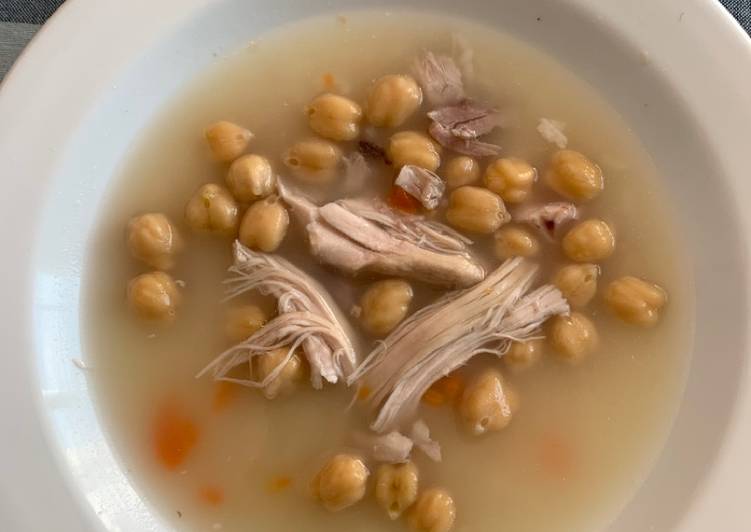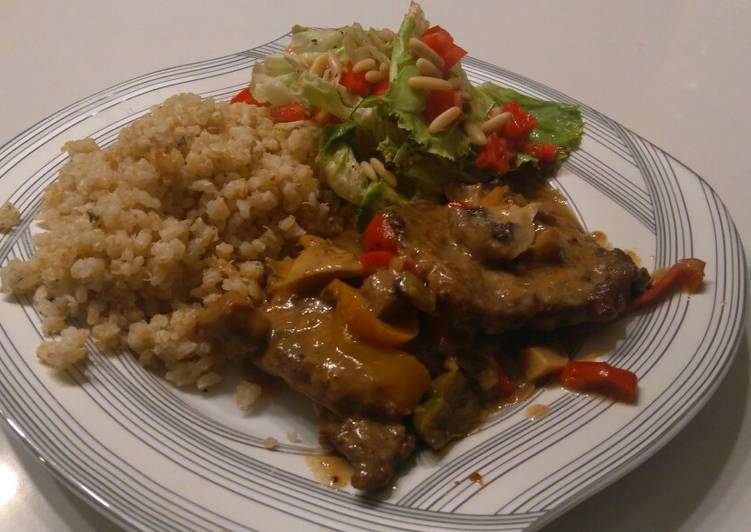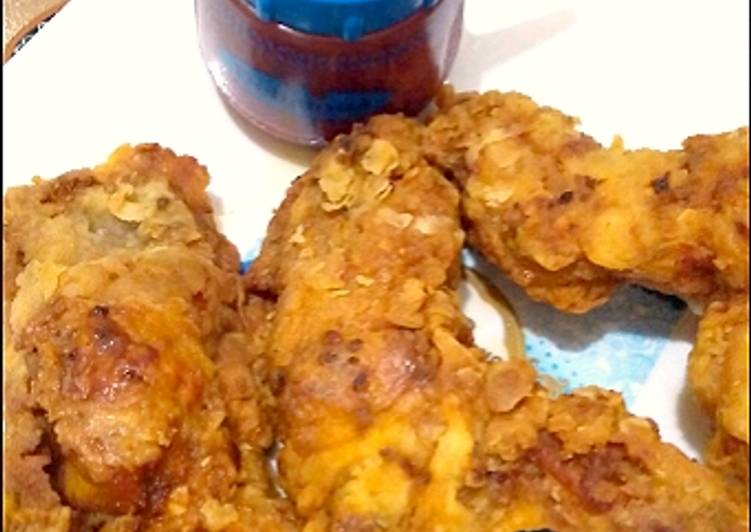
Hey everyone, it is me, Dave, welcome to my recipe page. Today, we’re going to prepare a distinctive dish, puchero (spanish cuisine). It is one of my favorites food recipes. This time, I will make it a little bit unique. This will be really delicious.
In Philippine cuisine, puchero (Spanish: Pochero; Tagalog: putsero) is a dish composed of beef chunks stewed with saba bananas (or plantains). The dish may also include potatoes or sweet potatoes, chorizos de Bilbao, bok choy, leeks, chickpeas, cabbage and tomato sauce. Other versions replace beef with chicken or pork.
Puchero (Spanish cuisine) is one of the most favored of current trending foods in the world. It is enjoyed by millions daily. It is easy, it’s fast, it tastes yummy. Puchero (Spanish cuisine) is something which I’ve loved my entire life. They’re nice and they look wonderful.
To get started with this recipe, we must first prepare a few components. You can cook puchero (spanish cuisine) using 8 ingredients and 9 steps. Here is how you can achieve it.
The ingredients needed to make Puchero (Spanish cuisine):
- Get 1-2 chicken tights (depends on amount of meat you want)
- Make ready 2 handful rice
- Get 1 Dried salted pig bone (hueso añejo)
- Take 1 dried salted pig skin (trozo pellejo añejo)
- Prepare 200 gr chickpeas
- Take 1 carrot
- Get Water
- Get 1 steam of spearmint
Puchero is a hearty Spanish stew belonging to the cuisine of the poor, featuring different types of meat, rice, noodles, and vegetables such as chickpeas, cabbage, carrots, and potatoes. The name of the dish, puchero, means stewpot, referring to the big clay pots in which the stew was originally prepared Puchero is a meat and chickpea stew from the Andalusia region of Spain. Pork, sausages and often chicken are slow-simmered with hearty vegetables and garbanzo beans. Puchero was originally a wintertime peasant dish eaten over several days, first with rice, then with noodles, then with the remainder incorporated into other dishes.
Instructions to make Puchero (Spanish cuisine):
- Put chickpeas in the water overnight with a little bit of soda powder
- To the big pot add chickpeas, chicken tight, pig bone and pig skin, cover it with a lot of water
- Cook it on the medium-high fire for about 1,5h or until chickpeas is ready
- Check on it every 5-10 min to add more hot water if needed (until starting point)
- Slice carrot and add to the pot after about 30min of cooking.
- You can use stock from the pot to make noodles soup for the next day. For that transfer some liquid to another pot. Don’t take a liquid right after putting extra water, wait for some time for it to get more flavor. After chickpeas is done you can also transfer some for the soup.
- When chickpeas is ready make sure you have enough water and add rice. Cook for 15 min on medium-high fire
- Separate chicken, remove bone and skin from the pot
- Take a steam of spearmint and add to the pot after switching off fire. Let it rest for 10-15 minutes.
Puchero or Pochero is a type of stew that is common to Spanish influenced countries such as the South America and the Philippines, The word "puchero" itself is a Spanish term that means "stew pot."The ingredient varies from region to region but the main ingredients that always stays the same are chick peas or white beans and meat which can be beef, goat, pork or chicken. Pochero (Puchero) is another great dish that we inherited from the Spanish. It is a stew of meat, vegetable, root crops and legumes and was originally considered as peasant stew (in Andalusia). This is because the meat that was usually used were from cheapest (fatty) cuts from a pig, cow, and chicken and with vegetables that were in season. Elle, along with Alan, is the owner of Spain Buddy and the busy web design business - Gandy-Draper.
So that is going to wrap this up for this exceptional food puchero (spanish cuisine) recipe. Thanks so much for your time. I’m sure that you can make this at home. There is gonna be interesting food at home recipes coming up. Remember to bookmark this page in your browser, and share it to your family, colleague and friends. Thank you for reading. Go on get cooking!

